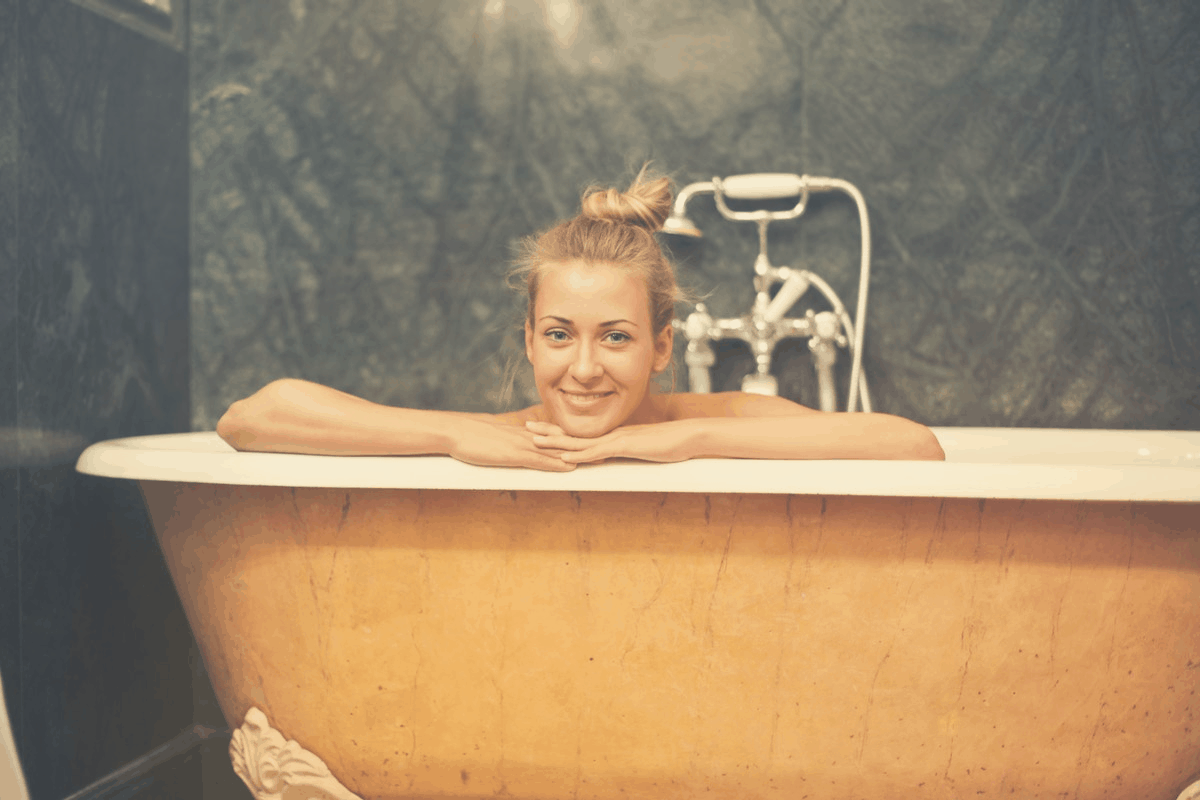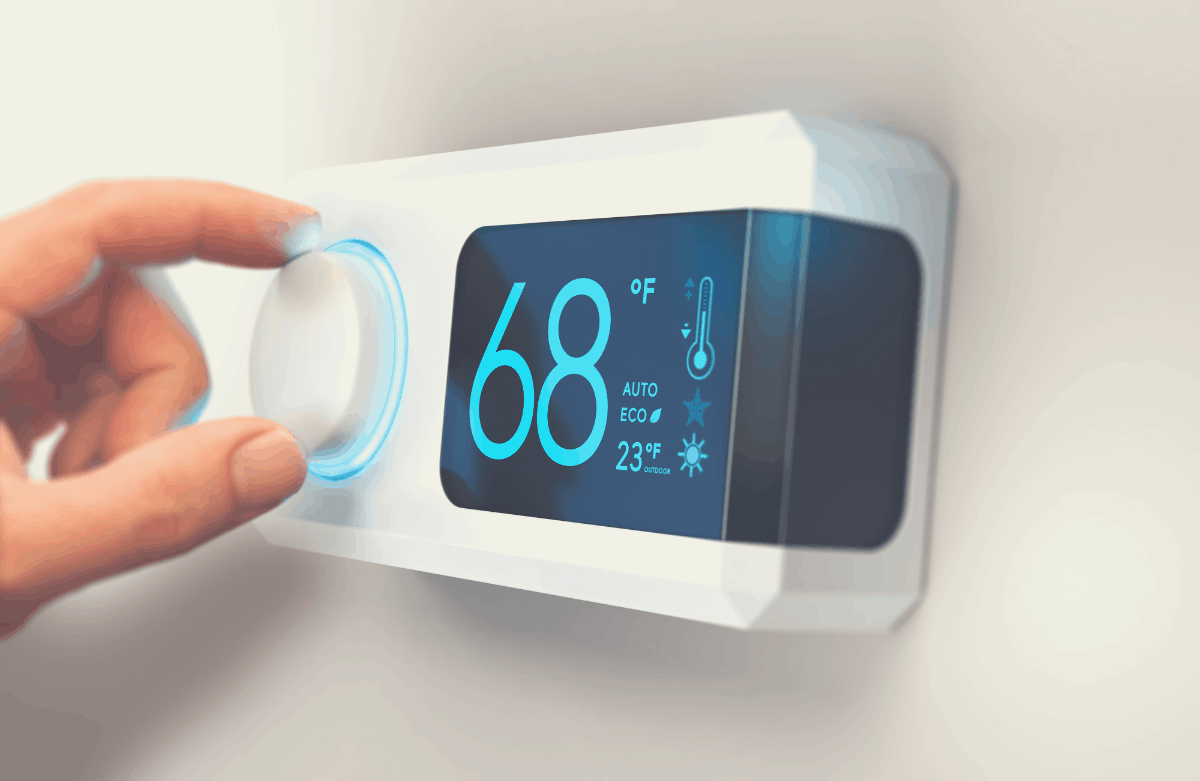Sciatica can be an uncomfortable and sometimes debilitating condition, causing pain that radiates from the lower back through the buttocks and down one leg. It occurs when the sciatic nerve, the largest nerve in the body, becomes irritated, resulting in inflammation and discomfort.
One of the challenges faced by those suffering from sciatica is finding a comfortable sleeping position that alleviates the pain and promotes restful sleep.
There are several sleeping positions and tips that can help those affected by sciatica attain better sleep quality.
The key is to find the position that offers the most relief, as the ideal sleeping posture may differ from one individual to another.
By understanding the underlying causes of sciatica and the right techniques to alleviate pain, affected individuals can improve their sleep and overall wellbeing.
How To Sleep With Sciatica
Hitting the hay with sciatic nerve pain may not be a walk in the park. However, it is not impossible as long as you find ways to eliminate or at least minimize the pain. Here are the most tried and tested techniques for sleeping comfortably with sciatica.
Best Sleep Positions
Side Sleeping
For many people with sciatica, side sleeping can provide relief from back pain. This position helps reduce pressure on the lower back and lumbar discs. Make sure to bend your top knee and place a pillow between your knees to ensure proper alignment and comfort. This prevents leg rotation and helps maintain a neutral position for the pelvis and spine.
Elevation Technique
If you have spinal stenosis causing your sciatica, a bent-forward position may alleviate pain by opening the narrowed spaces in the spine. To mimic this position while sleeping and achieve better rest, try using a large wedge-shaped pillow under your head and upper back. This can elevate your upper body and help maintain a slightly forward-leaning position.
Pillow Support
No matter which position you prefer, using pillow support can help reduce the pressure on your back and provide relief from sciatica pain. For those who prefer sleeping on their back, place a pillow under the knees to decrease pressure on the lower back. Pregnant women experiencing sciatic pain can benefit from a pregnancy pillow for sleep and rest, as well as placing a pillow between the knees and legs.
Stomach Sleeping
This position is a big no-no for anyone suffering from sciatic nerve pain because it can put excessive pressure on the neck and restrict the spine’s natural curvature. There are many instances of sciatica patients gaining relief from lying down on the stomach but any comfort gained may be temporary at best because the long-term damage to the spinal region can be far greater.
Pain Management Techniques for Sciatica
Heat and Cold Therapy
Managing sciatica pain can be achieved through the use of heat and cold therapy. For the first few days after the onset of pain, apply a cold pack on the affected area for up to 20 minutes several times a day. This can help to reduce inflammation and provide relief. After 2 to 3 days, switch to using hot packs, a heat lamp or a heating pad on the lowest setting, which can help relax tight muscles and improve blood flow to the area.
You’ll be amazed at how relieving it can feel which should translate to good sleep shortly after.
I found the Sunbeam Heating Pad on Amazon. With over 25,000 positive customer reviews (and counting), it is the number one model available for sale today.
Stretching before Bed
Before going to sleep, try doing some gentle stretches to relieve tension in your lower back and legs. Stretching exercises targeting the hamstrings, lower back, and hips can help alleviate pressure on the sciatic nerve. Always maintain proper form and avoid overstretching, as this could potentially worsen the problem.
Warm baths

A long, warm bath can be the key to a satisfying night of shuteye with sciatica. Many people report amazing benefits from this simple technique and that is not surprising because the science behind it is solid.
Warm baths can release feel-good hormones known as endorphins which provide relief for various knocks and aches in the body. The warm temperature of the water can also release tense nerve root muscles which may have been irritated.
Besides, warm baths are known for cooling down the body’s temperature- a key condition for getting good sleep.
If a long, warm bath is unrealistic, getting a quick warm shower or placing a warm water bottle at the foot of your bed can also provide tremendous benefits for good sleep.
Over-the-Counter Medications
Over-the-counter (OTC) medications, such as nonsteroidal anti-inflammatory drugs (NSAIDs) like ibuprofen or naproxen, can help reduce inflammation and provide temporary pain relief for those suffering from sciatica. Consult your healthcare provider before starting any OTC medications, and always follow the recommended dosages and instructions on the label.
Massage
Sciatic massages can be a potent way of gaining relief from pain and discomfort at bedtime. If you’re lucky to share a bed with a partner, asking him or her to rub the lower back region can be effective.
Make sure to point out the sites of the pain and monitor how each rub feels. Do not hesitate to let your partner know what feels good and what does not. This can enable getting the right massage at the preferred intensity for pain relief.
In the absence of a partner, a professional masseuse can be a great option if you can afford it.
The Naipo Shiatsu Neck and Back Massager from Amazon provide soothing relief for my back pain. I get custom massages via complete control over my preferred heat and pressure settings at any point in time. I highly recommend it.
Chiropractic Care
Sciatic nerve pain is caused by compression of the nerve roots due to unhealthy pressure on the lower back from factors such as sleeping position, posture, and sleeping surface pressure.
A visit to the chiropractor can lead to amazing results when the nerves and bones in the spinal region are realigned to ensure everything is back to normal.
This can be one of the best ways to gain relief from the discomfort associated with sciatica. If you’re struggling to nod off at night, it may be time to seek the services of a skilled chiropractor.
Practive Yoga

Tired of stiff sciatic nerve muscles that cause excessive discomfort at night? Why not try practicing Yoga?
Yoga can be a great way to release tense muscles caused by inflammation and excessive pressure. The key to reaping maximum benefits for sciatica pain is to target poses that can reduce pressure on the lower back region.
Attending yoga classes as a beginner can be a great introduction to the amazing benefits of the centuries-old renowned practice. If live classes are not an option, there are several practice videos online at absolutely no cost.
Just pick 5-10 routines that can be beneficial to the lower back region and practice continuously to perfect them.
The BalanceFrom GoYoga All-Purpose 1/2 Inch Extra Thick Anti-Tear Yoga Mat from Amazon is my go-to mat for doing yoga at home and the office. The 71-inch length and 24-inch width make it comfortable for people of all shapes and sizes. With 5-star reviews from over 21,000 verified buyers (and counting) on Amazon alone, you cannot afford to miss out on it.
Acupuncture

Acupuncture is an ancient Chinese medicine practice renowned for providing superior and long-lasting pain relief. If you suffer severe pain at night due to sciatic nerve problems, it may be time to consider this seemingly dramatic method.
Acupuncture involves the insertion of needles at the lower back area to stimulate the release of hormones and neurotransmitters that can mask pain.
It is a popular method especially among pregnant women who may be suffering significant lower back discomfort due to the pressure from the growing fetus’s weight.
The good news is that this popular Eastern medicine method is more effective at providing pain relief compared to over-the-counter medications such as ibuprofen, according to research.
Creating a Sleep-Friendly Environment for Sciatica
Choosing the Right Mattress
When dealing with sciatica pain, finding a comfortable sleep surface can make a significant difference. A medium-firm mattress is usually recommended for those experiencing sciatica, as it provides a balance of support and contouring. Some individuals may also benefit from using a mattress topper made of memory foam or latex, which can help to alleviate pressure points and promote proper spinal alignment. It’s essential to choose a mattress that best supports your preferred sleeping position, whether that’s side, back, or stomach sleeping.
A custom or adjustable-firmness mattress can also offer soothing relief from the discomfort associated with the condition. These mattresses may offer the flexibility to alternate between different levels of firmness until you settle on the model that provides maximum comfort.
Custom firmness mattresses may be relatively more expensive than the majority of regular models on the market. But they can save you time and money from the trial and error of going through multiple models before finding the right one.
Have you read the article we wrote on How to Find The Best Mattress for Sciatica Nerve Pain?
Choosing Supportive Neck Pillows
A supportive neck pillow can offer satisfying nights even among those who experience severe sciatica pain at night. While soft pillows may seem cozier, going to bed on one can aggravate the symptoms of sciatic nerve discomfort.
Note that fluffy pillows can inhibit the upper body from lying in a straight position leading to excessive pressure on the lower back.
Instead, experts recommend choosing supportive neck pillows that can straighten the upper spine and relieve the pressure on the lower back. Remember, firm pillows may cause sleeping difficulties initially especially among those used to lying down on flat models.
However, sticking to them can lead to rewarding benefits for your spinal health and bedtime comfort in the long run.
The Snuggle-Pedic Ultra-Luxury Bamboo Shredded Memory Foam from Amazon has been a game-changer since we ordered it last year. As Chronic Sciatica pain sufferers, my girlfriend and I love sleeping on these pillows because it provides just the right amount of support for the lower back.
Reducing Stress and Anxiety
Stress and anxiety can exacerbate sciatica symptoms and make it difficult to fall asleep. Taking steps to create a peaceful and calming sleep environment is crucial for people with sciatica. Consider incorporating the following strategies into your bedtime routine:
- Establish a consistent sleep schedule: Going to bed and waking up at the same time each day can help regulate your circadian rhythms, making it easier to fall asleep and wake up refreshed.
- Limit screen time: Exposure to blue light emitted by devices like smartphones, tablets, and computers can interfere with the production of melatonin, a hormone that helps regulate sleep. Avoiding screens at least an hour before bed is recommended.
- Practice relaxation techniques: Deep breathing exercises, progressive muscle relaxation, or meditation can help reduce stress and promote a sense of calm before bed.
- Create a comfortable sleep environment: Ensure your bedroom is quiet, cool, and dark. Use blackout curtains or a sleep mask to block out light, and adjust the room temperature to between 60 and 67 degrees Fahrenheit (15.5 to 19.4 degrees Celsius).
By implementing these strategies, you can improve the quality of your sleep and support your body’s natural healing processes, ultimately reducing the impact of sciatica pain on your daily life.
Essential Oils
The therapeutic effects of essential oils are well-known and these sweet-smelling oils can come in handy for sciatic nerve pain sufferers. Essential oils such as Jasmine, Lavender, and Bergamot release aromas that can put anyone to sleep.
No wonder, they have been in use since medieval times to treat the symptoms of insomnia. The good news is that these oils can be applied in a variety of ways to suit a person’s preferences.
Firstly, they can be used in preparing baths to supercharge relaxation levels after a long hard day. This can create sciatic nerve pain relief while setting up the right conditions for the body to doze off.
Essential oils can also be poured into electronic or manual diffusers to dissipate the sweet-scented aromas across the bedroom. Once these scents are inhaled, falling asleep is the next logical step.
The Essential Oil Diffuser from Amazon helps me sleep quicker and longer. Recommended by my best friend who suffers severe body pains, it is a potent weapon for eliminating sciatica-induced insomnia.
Comfortable Bedroom Temperature

An extremely cold or hot room can do your sleep no favors. Can you imagine the feeling of excruciating nerve pain while sweating at the same time due to excessive bedroom temperature? You can be sure of tossing and turning in bed all night.
During harsh winters, taking steps such as turning on the heating, closing bedroom windows, and wearing temperature-appropriate clothes can promote good sleep. Hot summers, on the other hand, may require turning on the AC or fan to lower bedroom temperatures.
Many people also practice sleeping naked or wearing light clothes to prevent night sweats and other forms of discomfort.
Experts say the best temperature for good sleep ranges between 60-67 degrees so keep that in mind regardless of the prevailing climate at any point.
White Noise
Listening to a white noise machine can put even the most distressed mind to sleep. These machines can be placed on the nightstand or the main bed for solo sleepers with queen or king-sized mattresses.
White noise machines produce sounds that can be relaxing for the mind and stimulate comfortable nighttime rest even among sciatic nerve pain sufferers. The sounds produced can also mute other background noises that may be keeping you awake at night.
If you live in a college dormitory with loud or frequently-partying roommates, these machines can be heavenly at bedtime.
The Dohm Classic White Sounds Machine from Amazon has reversed my insomnia since I ordered it 3 months ago. It produces pleasant sounds that mask other background noises for effective sleep even during nights of distress.
9. Physical Therapy
Physical therapy can be a smart option to deal with the symptoms of sciatica and this is why many doctors recommend it as an option for patients. Anyone who decides to go down this route can get a referral from his or her primary care doctor to find a licensed physical therapist.
Physical therapists typically come up with treatment plans based on the patient’s body type as well as the degree of pain. It may include physical exercises that can relieve pressure on the sciatic nerve and lower back as well as electronic stimulation and manual therapies.
While physical therapy can be an effective way to gain relief from the symptoms of sciatic nerve pain, they may not be for everyone. Do not hesitate to opt for another method if it is not working for you or seems too daunting.
12. Pain Relief Creams
If you’re struggling to sleep due to the symptoms of sciatica, it may be time to take things into your hands with a pain relief cream.
Pain relief patches or creams can provide soothing relief by directly applying it at the site of the discomfort. These creams or patches usually contain pain-numbing ingredients such as menthol or capsaicin.
The good news is that there are several creams on the market that work for 8 hours straight. As long as you apply the right one, sleeping through the night should be a breeze.
I love the Penetrex Pain Relief Therapy Cream from Amazon. Trusted by over 2 million users, it contains active ingredients that numb the pain in any area of my body throughout the night. It is a must-have for everyone.
Good Video on Tips for Pain relief from Sciatica
Understanding Sciatica
Sciatica is a type of nerve pain that occurs when the sciatic nerve is irritated or compressed. The sciatic nerve is the longest and widest nerve in the human body, running from the lower back through the hips and buttocks and down each leg. In this section, we will discuss the causes and symptoms of sciatica to better understand how to sleep with this condition comfortably and effectively.
Causes of Sciatica
There are several factors that can lead to the development of sciatica, including:
- A herniated disk, which occurs when a disk in the spine bulges or ruptures, putting pressure on the sciatic nerve (Mayo Clinic).
- Spinal stenosis, which is the narrowing of the spinal canal where the spinal cord and nerves pass through (Cleveland Clinic).
- Piriformis syndrome, a condition in which the piriformis muscle in the buttocks irritates the sciatic nerve.
- Spinal injury or infection, which can cause inflammation and pressure on the sciatic nerve.
Symptoms of Sciatica
Sciatica symptoms can vary in intensity and duration depending on the underlying cause. Some common symptoms include:
- Pain that radiates from the lower back, through the hips and buttocks, and down one leg (Mayo Clinic).
- Numbness or tingling in the affected leg.
- Muscle weakness in the affected leg.
- In severe cases, difficulty moving the leg or foot.
Understanding the causes and symptoms of sciatica is crucial for managing the condition and finding relief during sleep.
Why Sciatica Pain is Worse at Night
Chronic and short-term sufferers of sciatica say the discomfort can become worse at night. This is because apart from night shift workers, many of us work during the daytime and hit our beds at night to rest.
Unfortunately, a sleeper’s position or nature of the sleeping surface can aggravate one of the 5 nerve roots at the lower back through irritation or compression.
This can worsen the degree of pain felt especially at night when the mind is usually free from the pressures of the day. With minimal distractions, if any, the transmission of pain signals to the brain becomes unhinged, and this can aggravate the level of discomfort felt.
When to Consult a Medical Professional
Managing sciatica pain at night can often involve finding the right sleep positions and making adjustments to your sleep environment. However, there are instances when it is essential to consult a medical professional for guidance and appropriate treatment. Some key indicators that you should seek professional help include:
- Recommended sleep positions fail to provide relief or cause increased discomfort
- Prolonged or worsening pain over time
- Numbness, weakness, or tingling in the affected leg
- Loss of bowel or bladder control
- Sudden, severe pain following an injury or accident
A doctor can evaluate your symptoms, identify potential causes of the pain, confirm a sciatica diagnosis, and develop a treatment plan tailored to your specific needs. Treatment options may include conservative measures such as physical therapy, medication, or lifestyle changes. In some cases, more invasive treatments like injections or surgery may be recommended, depending on the severity of your condition and how it responds to conservative treatments.
If you experience any of the mentioned symptoms or have concerns about your sciatica pain, do not hesitate to consult a healthcare professional. Timely intervention can help alleviate pain, improve your sleep quality, and prevent your condition from worsening.
